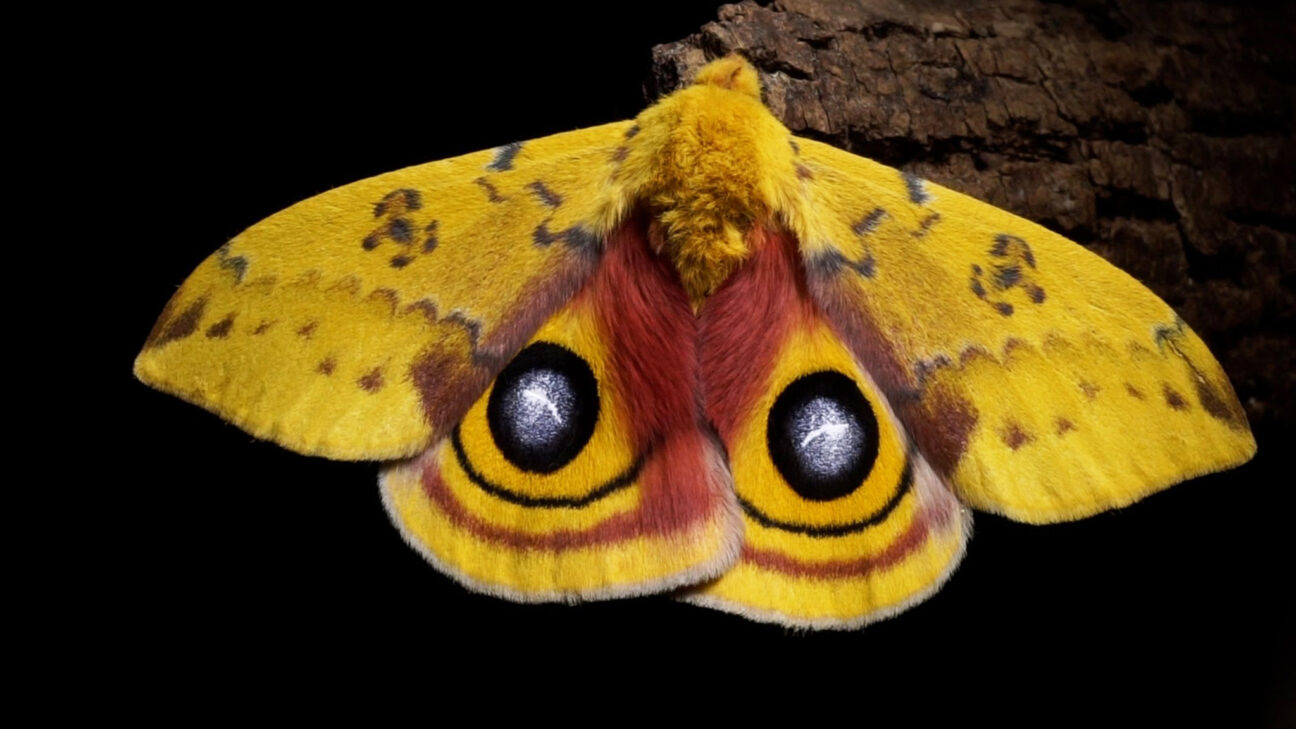
time, memory, loss
the moth & the moon
stills of furry color
so much surplus beauty
the most species rich (after beatles)
3,000 in New York
14,000 in North America
160,000 globally (named & described)
they adapt to flora & fauna
creating fragmented variations
chromatic mimicry
200 million year old species
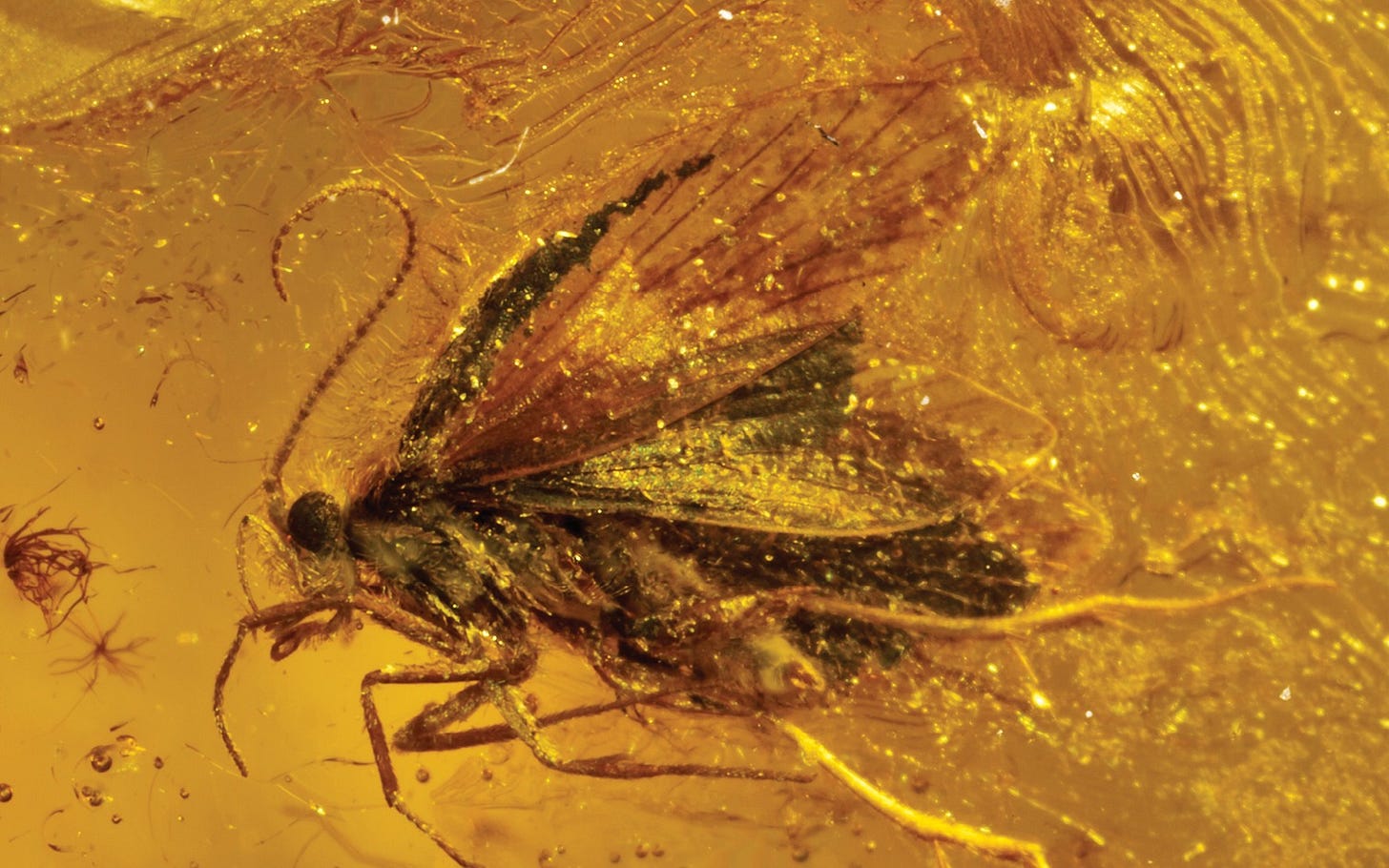
amber from the baltic sea
trapped in tree resin
fossilized
like a gem
translucent
an embassador from deep time
what is the importance of them?
in those dark days (1940s) and now
a temporal thread
the mind gradually gathering
a small mortal shiver
metallic sweet and painful
currents of time, change, loss
what frame can I use to hold this fear?
through what lens can I study it
and not look away?
culling an entanglement
with this creature
both unfamiliar and domestic
synanthrope
an untamed animal in proximity
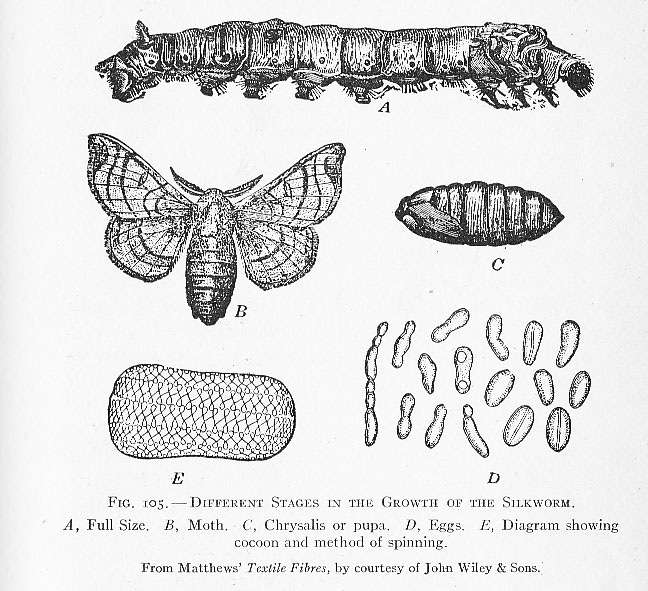
1860s New England
american silk worms spinning
a lucrative alternative
to slave trade cotton
an industry “disrupted” by civil war
Étienne Léopold Trouvelot
tried to cultivate, to cross breed
a commercial endeavor
he brought from Europe
a non native species
gypsy slur spongy moths

a violent storm
and they escaped
invasive and destructive
they wreaked havoc
the pest was to be exterminated
but they couldn’t be contained with poison
a biocontrol agent was introduced
the compsilura fly
it has reduced other moth species by 80-90%
but the spongy moth still thrives in North America
the fly attacked and decimated
insect and moth species
a biological backfire
environmental degradation
Trouvelot left
became an astronomer
and died in France
without knowing
the fatal consequences
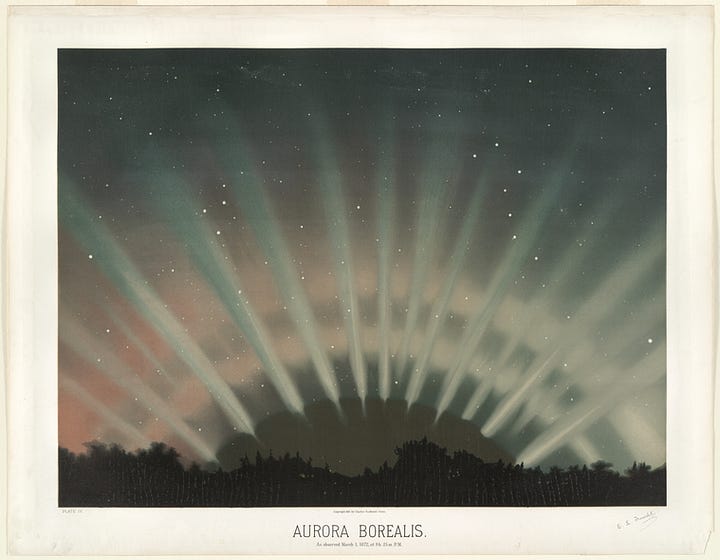
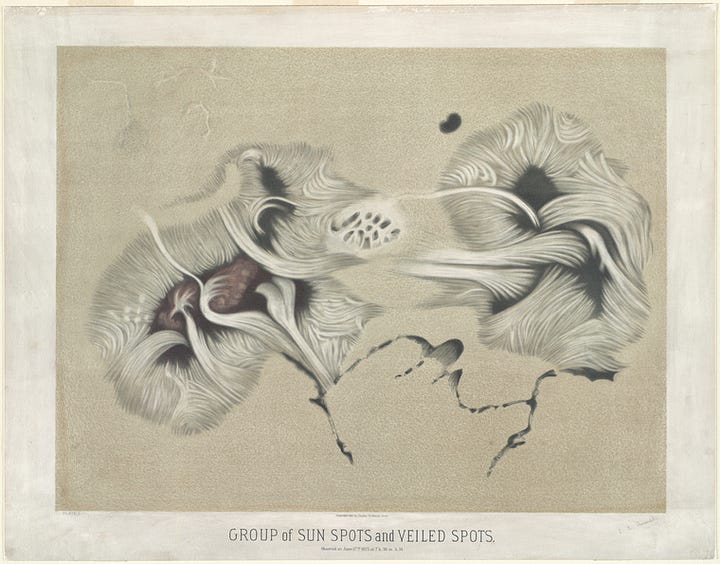
a closeup of an animal
suggests engagement
with their interior life
their eyes
reflect back the unknown
echoed voices
nursery chimes
a light in the dark
the nature of omens
a cabin in the woods
daily messengers of death
quarantine in the city
horror and awe
nightmares envisioned
crepuscular
the slow coming of dusk
a species beholding the monster form
from the armchair by the window
a system for knowing and shaping worlds
transformation
metamorphosis
a caterpillar shedding skin
almost as if the animals
are different beasts
moth vs caterpillar
hatching eggs
molting into pupa
emerging from the cocoon
a promise within
a moth eaten suit
his only black one
for his mother’s funeral
a thread of silk
in a piercing needle
overwrought symbolism
I arrived at this ruined place
uneasy and full of disgust
I am becoming
old and strange
I worry
moths are part of my retreat
from people
the first movie of a moth
was Thomas Edison’s 1916 film
The Cecropia Moth
how ironic
given the lightbulb’s effect
on the nocturnal world
The New York Times
describes moths
as a white plague
an outbreak
a collapse
a fluttering army
mysterious swarms
swooping down
like snowfall
captivated by city lights
the black & white newspaper flickers
moths drawn to a flame
they dance and die there
no one knows exactly why
they’re attracted to light
the distant moon
tries to orient them
but instead they
spiral around
this decreases
near the full moon
less interference
from the artificial
lunar navigation
transverse orientation
blinding intensity
synesthesia
light is perceived
as pheromone
a way to communicate
love drunk moonlight
they careen about
as if intoxicated
stunned
inflamed
disoriented
a bright crisis
of crashing populations
the moth closes its wings
like an eclipse
This post was based on the experimental documentary The Night Visitors by Michael Gitlin which I got to see at Fort Green Park thanks to Rooftop Films’ free programming.
The director’s favorite review was from his local newspaper in upstate New York which described it as ‘David Attenborough on acid’. He was also quite happy to have a screening in the park during summer which gave us a chance to see these tiny creatures up close on a light sheet.
When asked about the inspiration behind the movie, he explained he had turned 60 and was suffering from insomnia, so this became his nighttime hobby with the hope of spotting a luna moth.
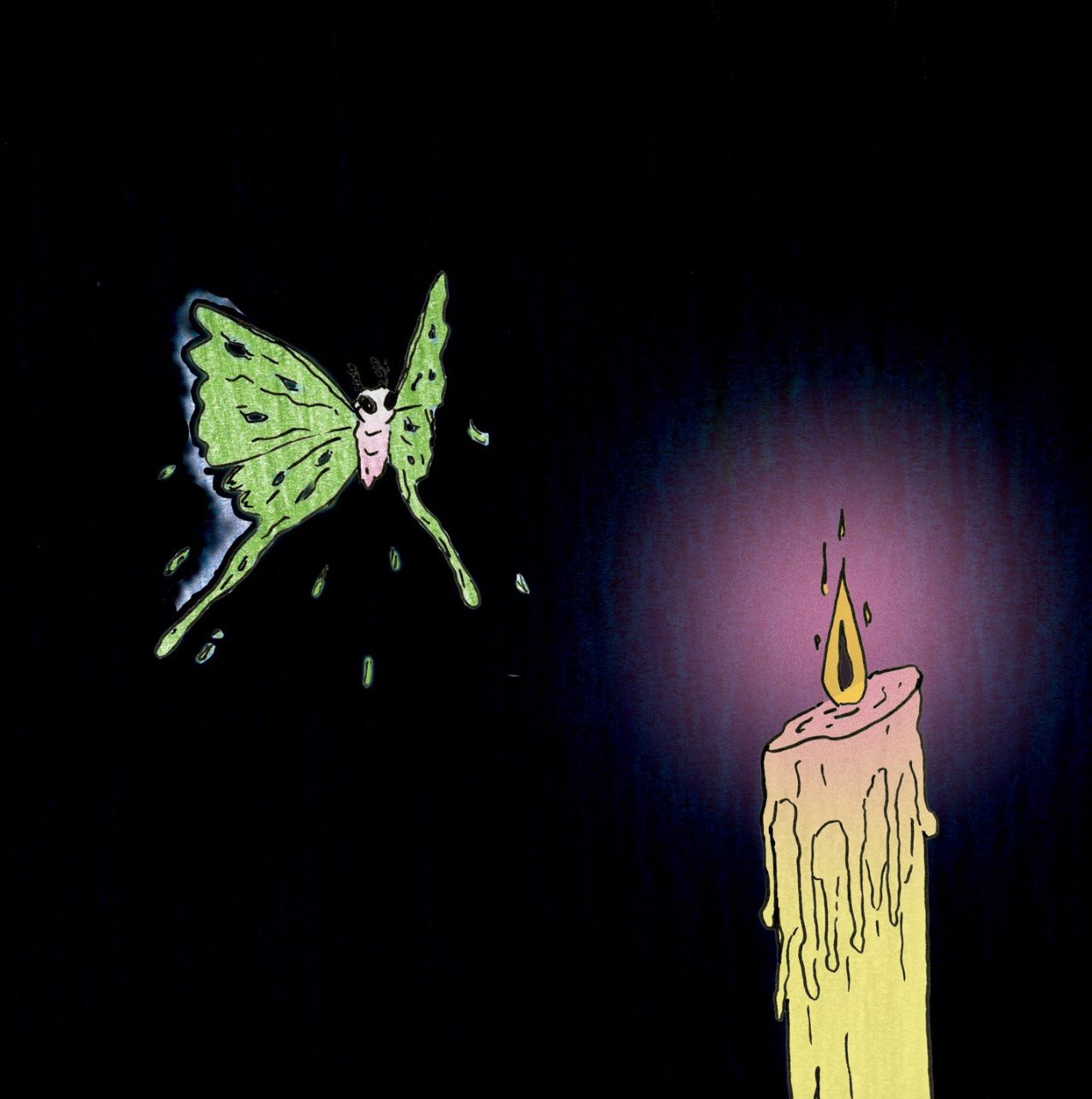
The New York Public Library became his temple, his synagogue, as he wove together research and composed music, looking inward and out.
The documentary was shot during Covid-19, hence the presence of death & grief. He wanted to highlight the beauty, strangeness, and otherworldliness of these creatures as he processed this time.
The through line was each stage of growth for Cecropia. He began to raise moths and during the late spring of the pandemic, they hatched.
‘The film looks at moths as aesthetic beings and as carriers of meaning, aiming for a deep encounter with the beauty and incommensurability of the profoundly other. The small hours of the night are threaded through with a sense of mortality and loss. Moths, with their trembling and exquisite impermanence, provide both a kind of solace and, in their diversity and difference, a focal point around which the desire to know can be organized.’
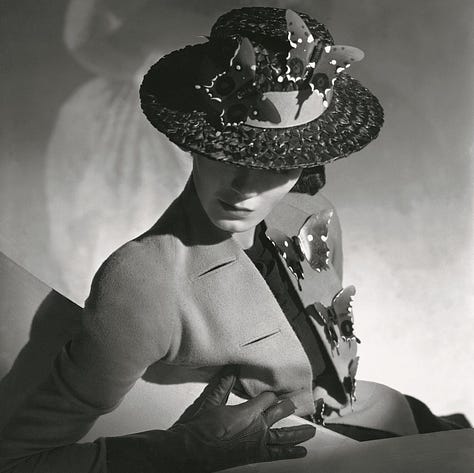


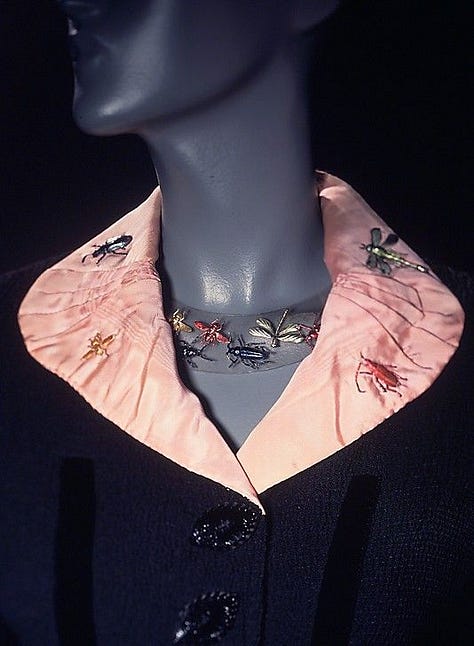
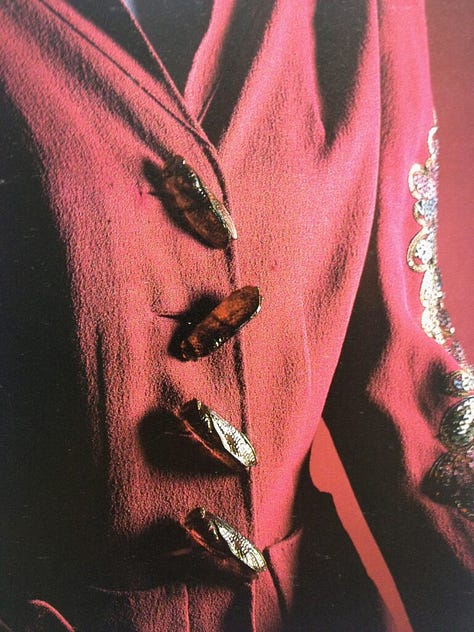
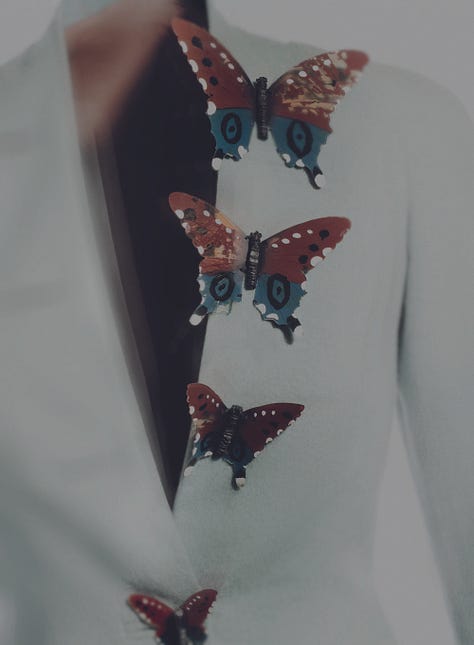
Additional Resources:
A proper synopsis & review of the film
Mothography, closeup portrait photographs
Animal welfare issues with silk production, the origins of ahimsa peace silk, its critiques and alternatives
Evolutionary timing of butterflies and moths (they’re part of the same insect order Lepidoptera, butterflies evolved from moths 100 million years ago)
I can’t reference NY Times without mentioning The New York War Crimes
Nonotuck, the abolitionist silk farm where Sojourner Truth resided
The moth music featured in the voiceover
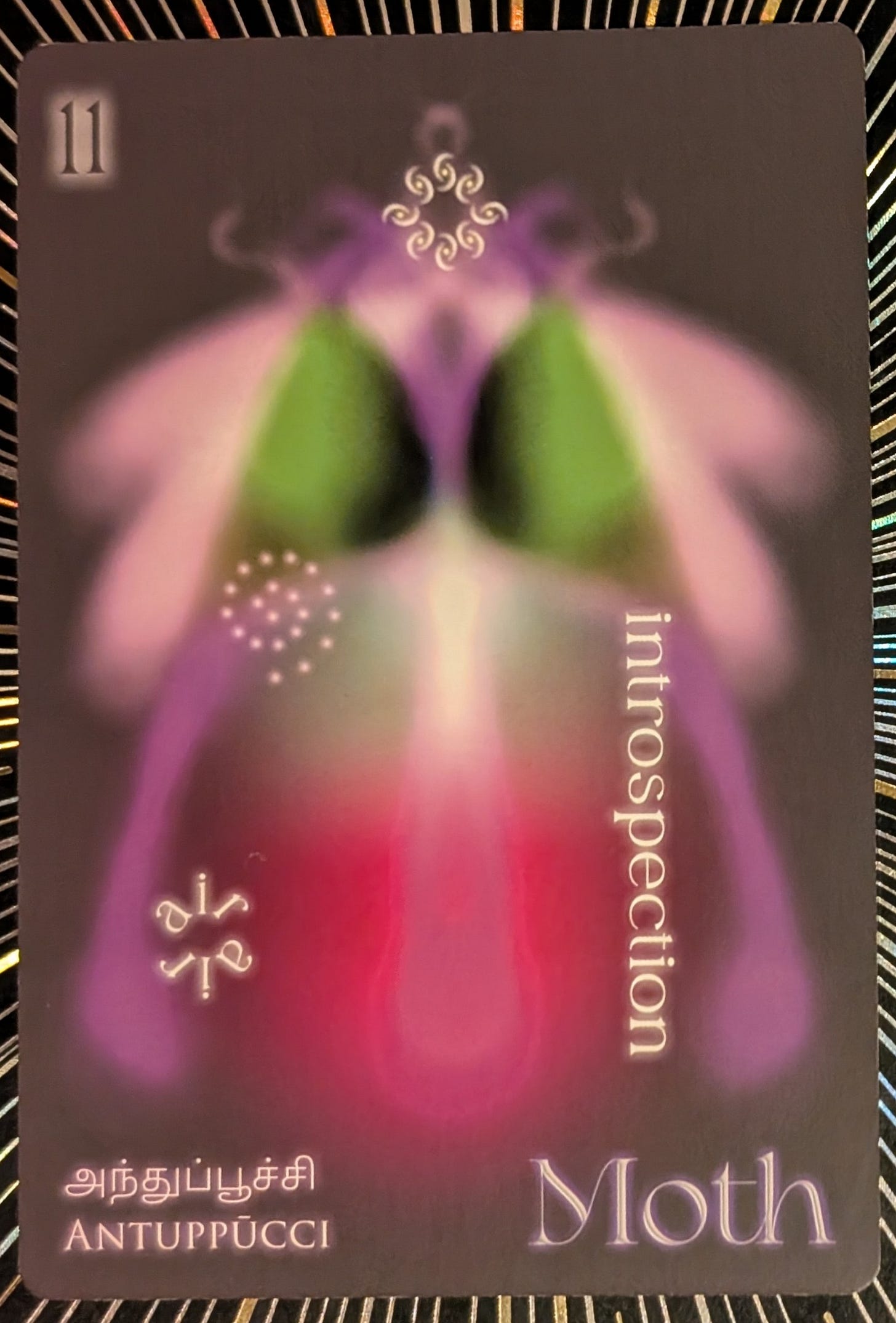




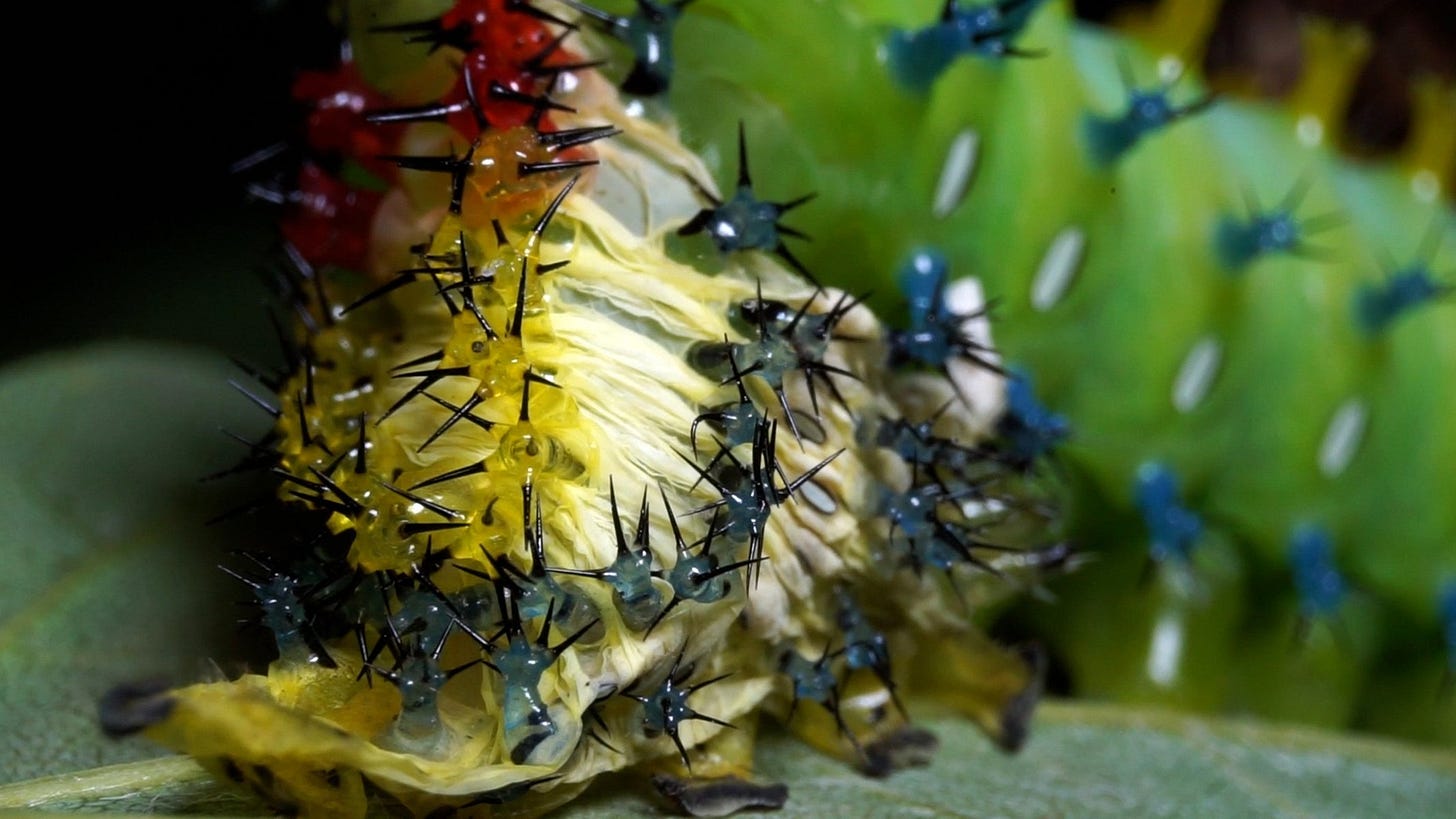
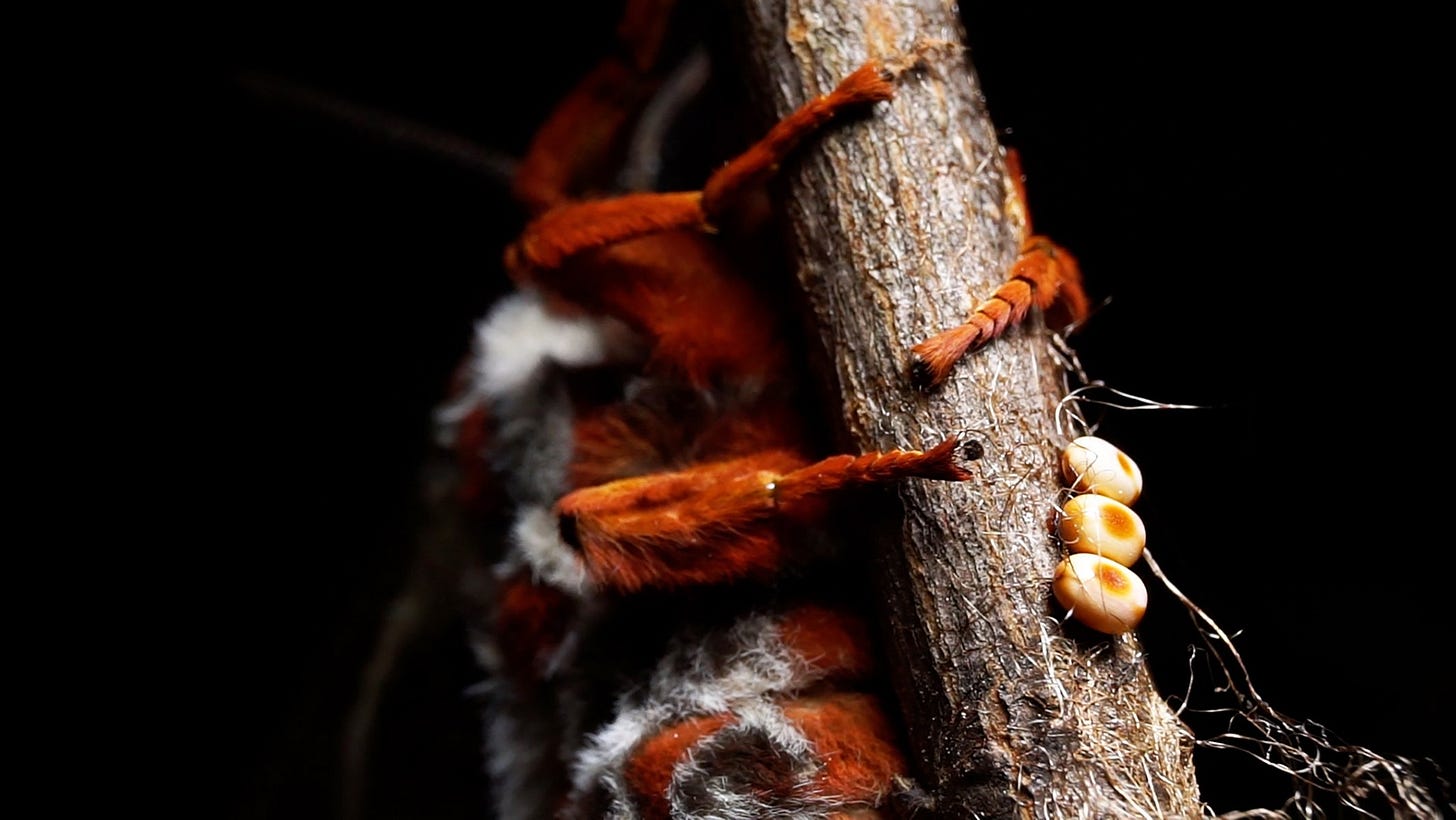
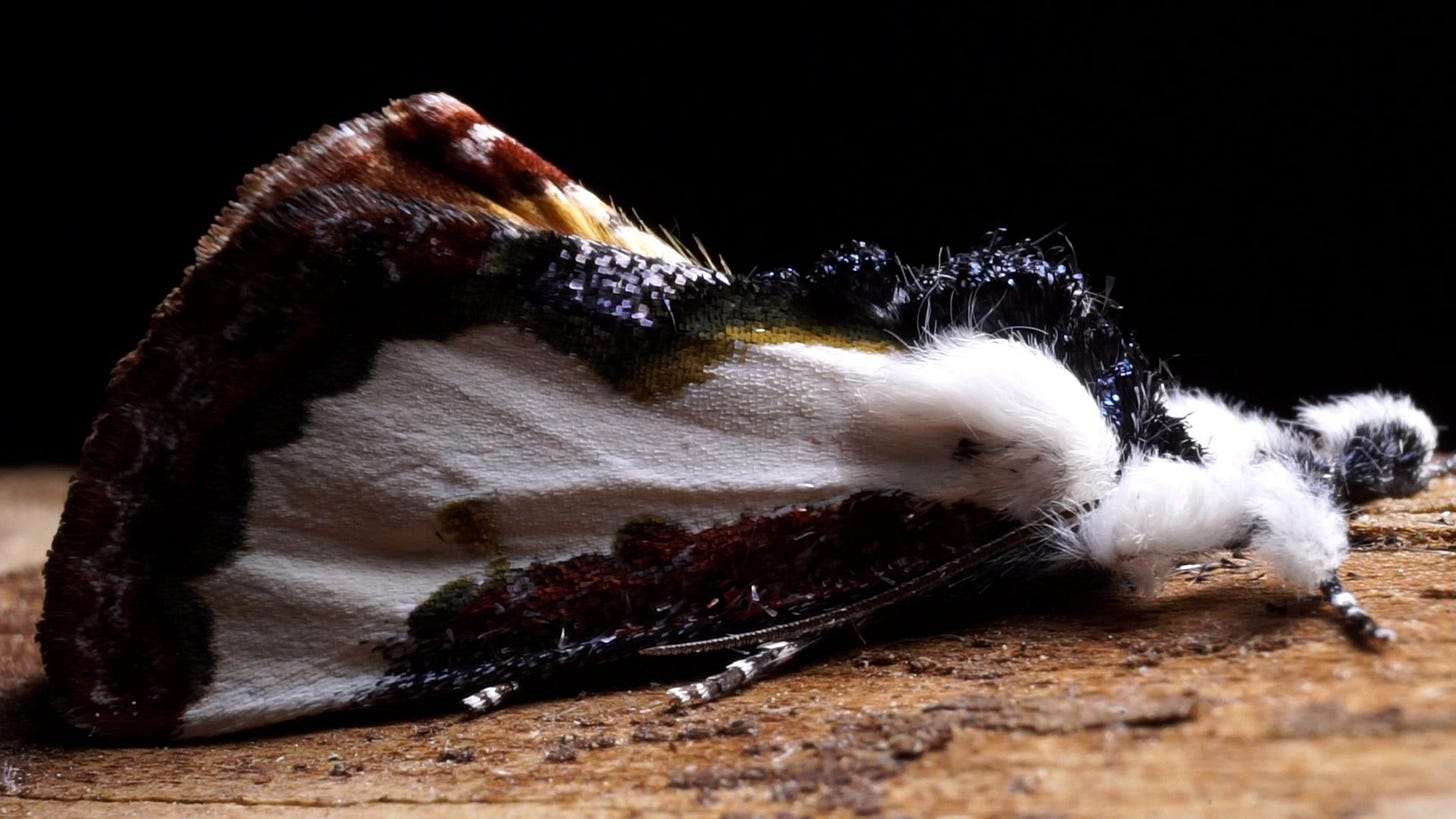

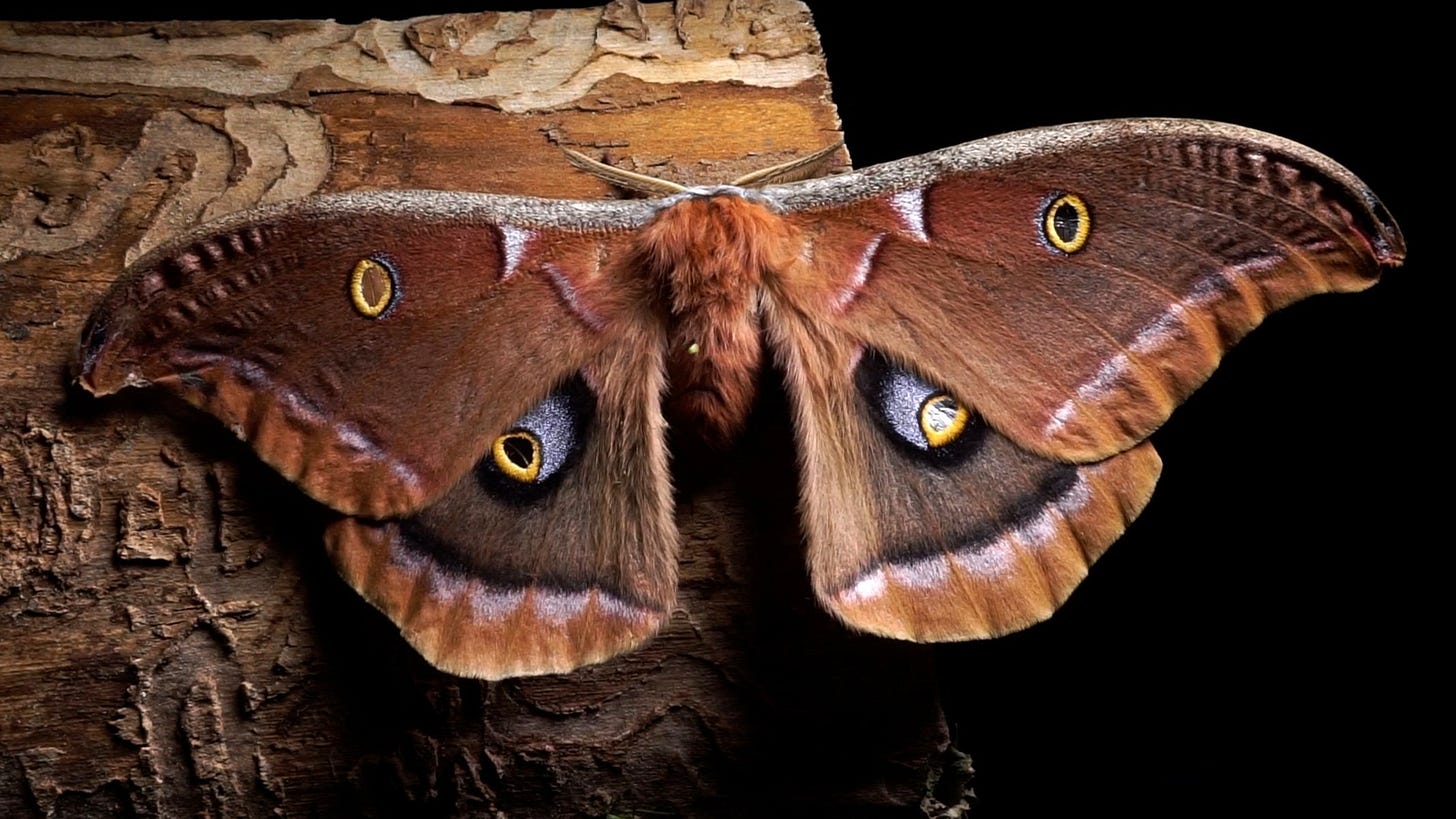
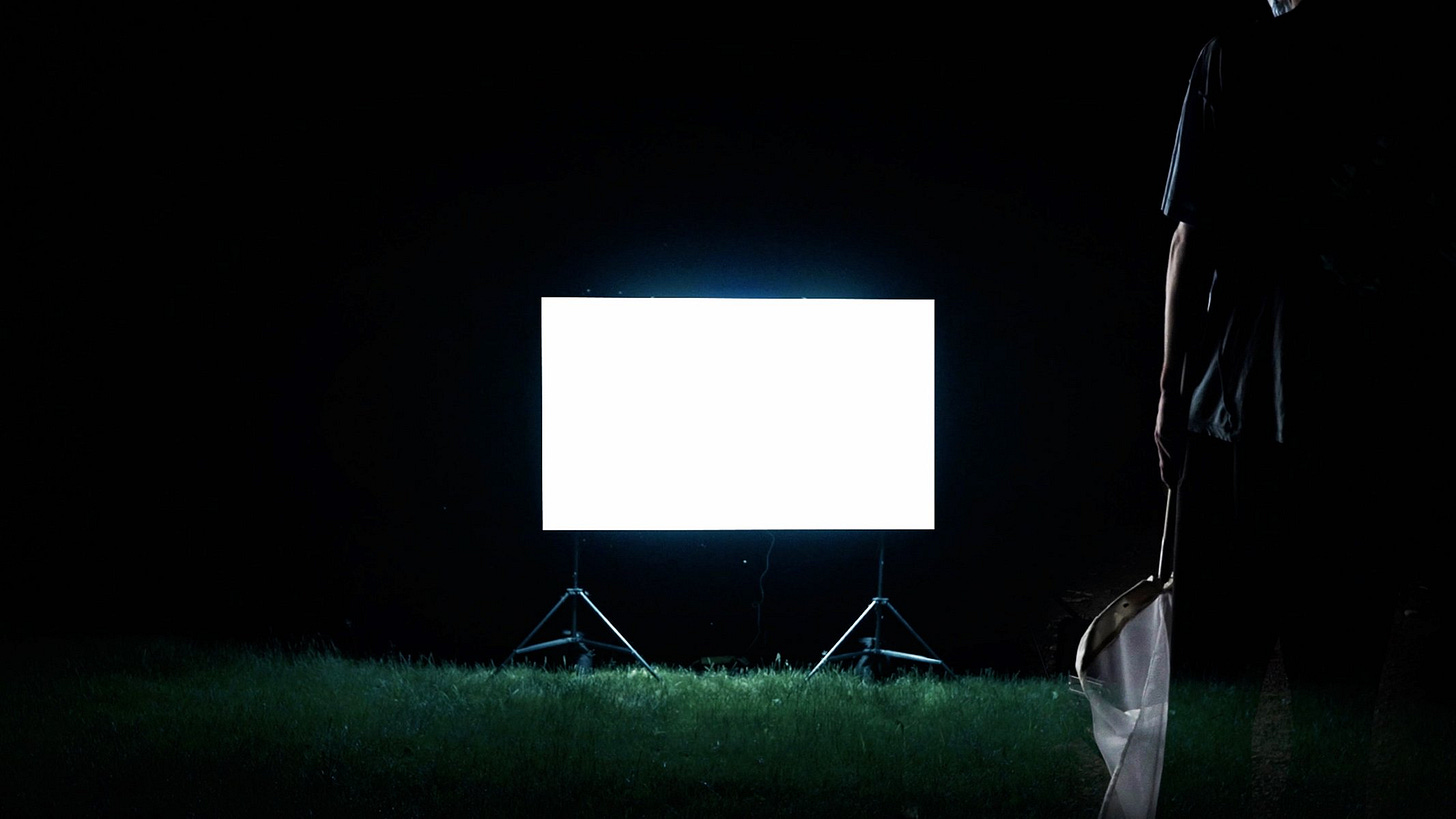
So beautiful. I've been looking at pics of luna moths and also trying to learn more about the abolitionist silk farm, Nonotuck, in Connecticut... lovely to see this woven into this beautiful poem!
This was so beautiful to listen to! 💛